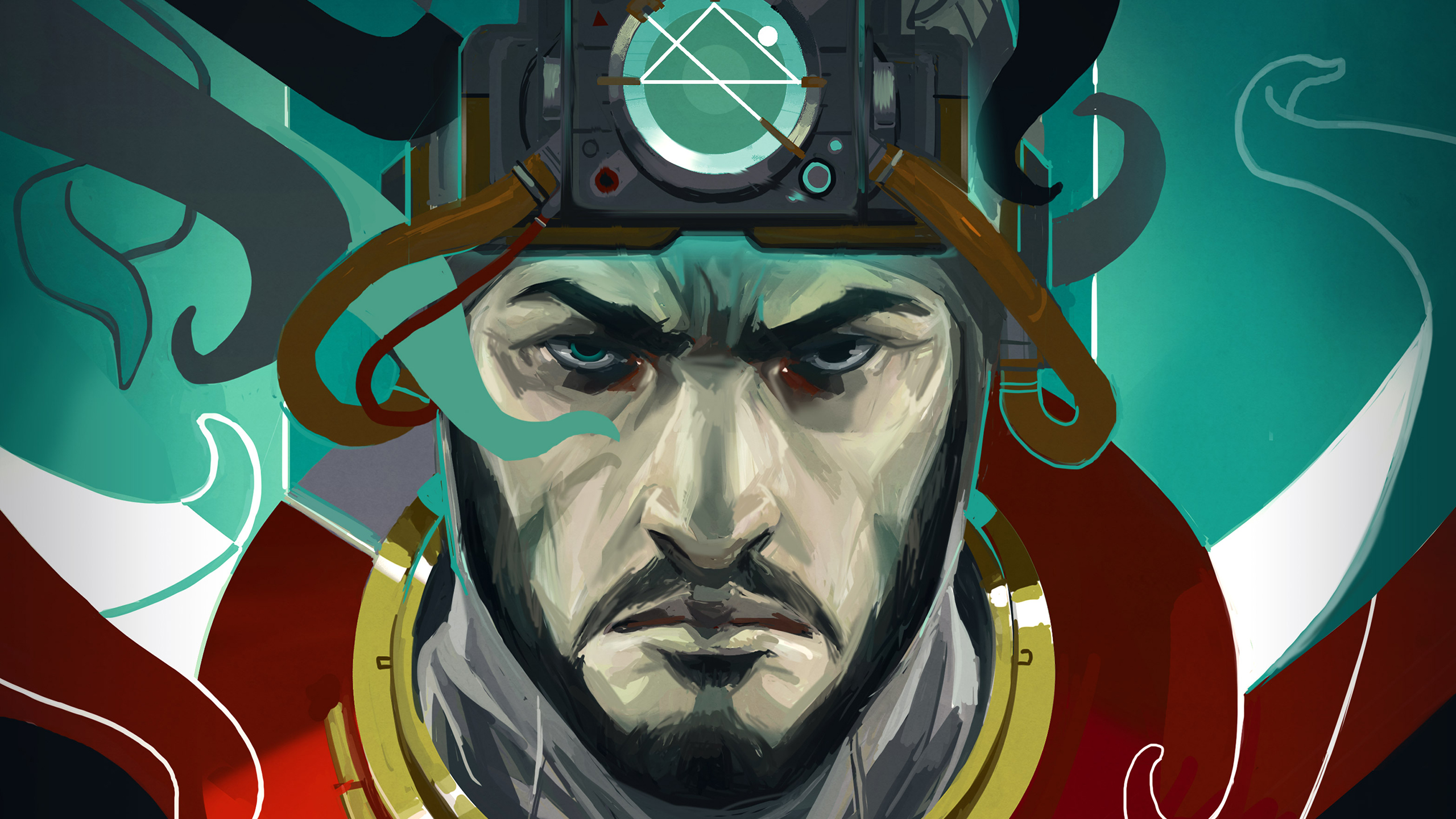
On its release in 2017, Prey burned brightly but all too briefly. A wave of glowing reviews arrived late, thanks to Bethesda withholding code from journalists, and the game was burdened with a title that suggested it was a reboot of a not-very-well known title from a decade prior – a decision director Raphaël Colantonio recently said was forced upon the developer. However, two games released in 2023 have helped to push Arkane Austin's science-fiction immersive sim back into the spotlight, albeit for very different reasons.
On the one hand there is System Shock, Nightdive's faithful update to the Looking Glass original, to which Prey owes almost as great a debt as its remake. On the other, there is Redfall, a game that highlighted the imagination, innovation and finesse demonstrated by Arkane Austin in Prey – by their lack in its followup. Yet those qualities weren't properly appreciated at the time of Prey's release, and not merely with the wider audience it failed to find. Many accustomed to the hazy playspaces of immersive sims found it systemically obscure and slow to satisfy. This is because Prey might be the least compromising of all Arkane's immersive sims, if not the entire genre.
Into the breach
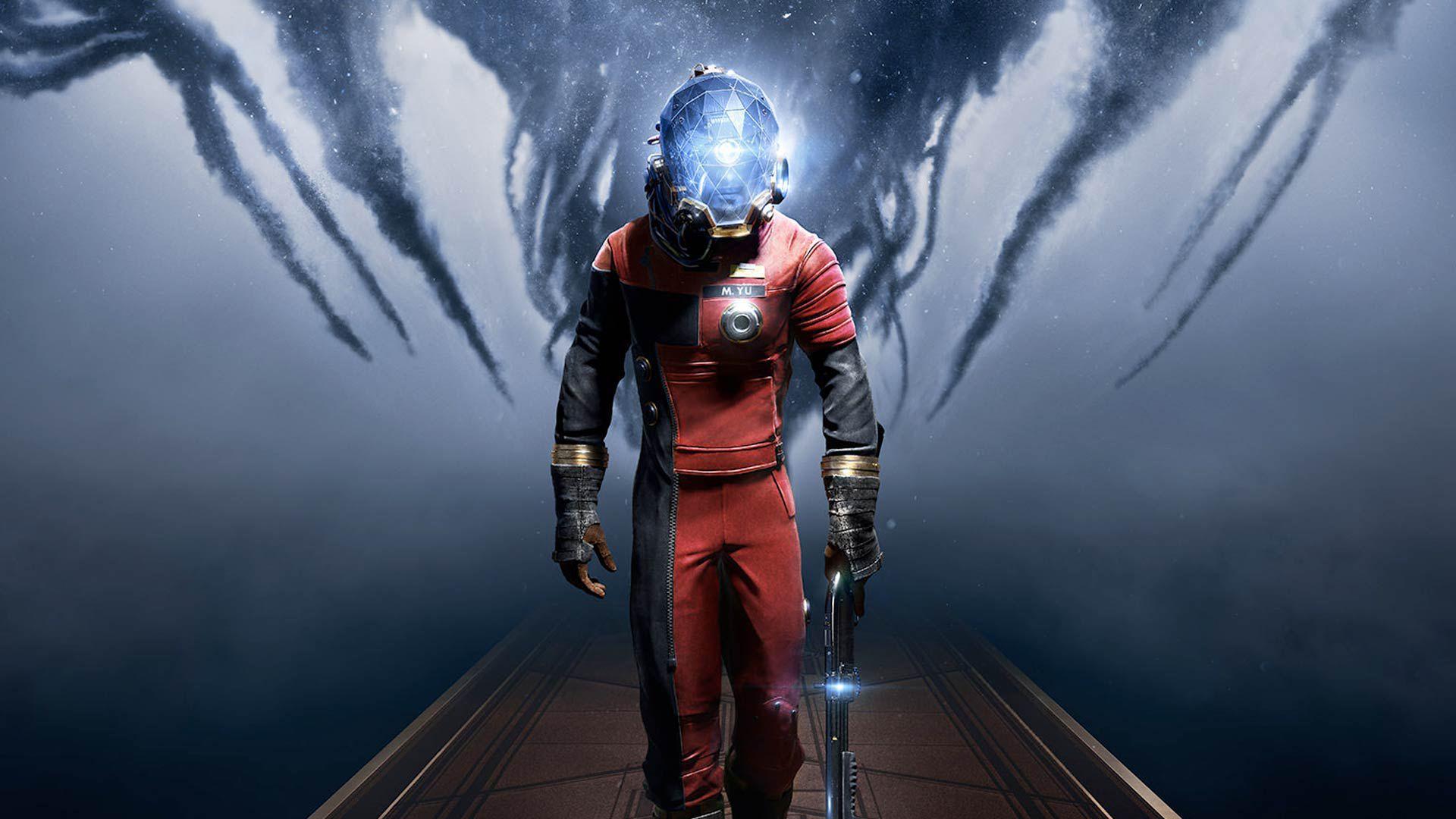
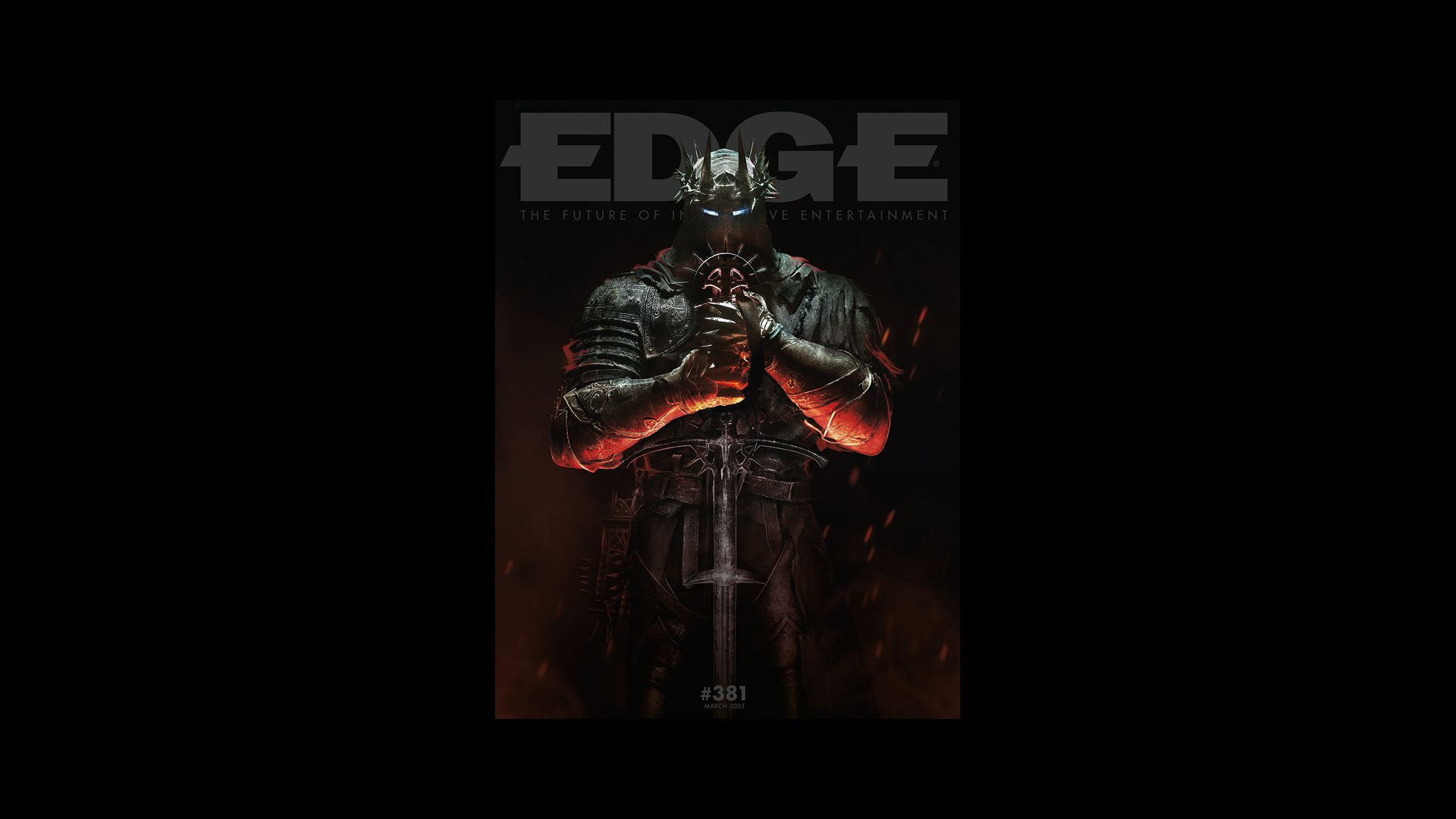
This feature originally appeared in Edge magazine. For more in-depth interviews, reviews, features, and more delivered to your door or digital device, subscribe to Edge magazine.
It lacks the flashy violence of Dishonored, the cyberpunk allure of Deus Ex, the undersea fantasy of BioShock. The toolset it offers you is eclectic, ranging from a gun that shoots glue to the ability to turn into a cup, and a literal toy. Its story and themes are coldly intellectual, avoiding emotive drivers such as revenge or conspiracy. There are no crazed megalomaniacs or scenery-chewing AIs to be found here; those enemies you do face are vague and amorphous by design.
Such ambiguities make for a cumbersome pitch, but they are also Prey's greatest strength. Nowhere is that more starkly demonstrated than in the game's opening. Morgan Yu, a mildly customisable player character, awakens in their penthouse apartment, before taking a helicopter ride to the HQ of megacorporation TranStar Industries. After flying over a cityscape where the game's opening credits form parts of its architecture, you meet Yu's brother, TranStar CEO Alex, and embark upon a series of psychometric tests. But these tests are unexpectedly interrupted – and the next thing you know, you awaken once more in your apartment.
Arkane then leaves you to figure out the rest. That the janitor you passed in the corridor is now a withered corpse. That the wrench by their side can be used to shatter your apartment's plate-glass windows, with its illusory sun-kissed balcony, to reveal a laboratory dedicated to monitoring you. That you're not on Earth at all, in fact, but rather orbiting the Moon on the space station Talos 1, overrun by hostile alien creatures known as the Typhon.
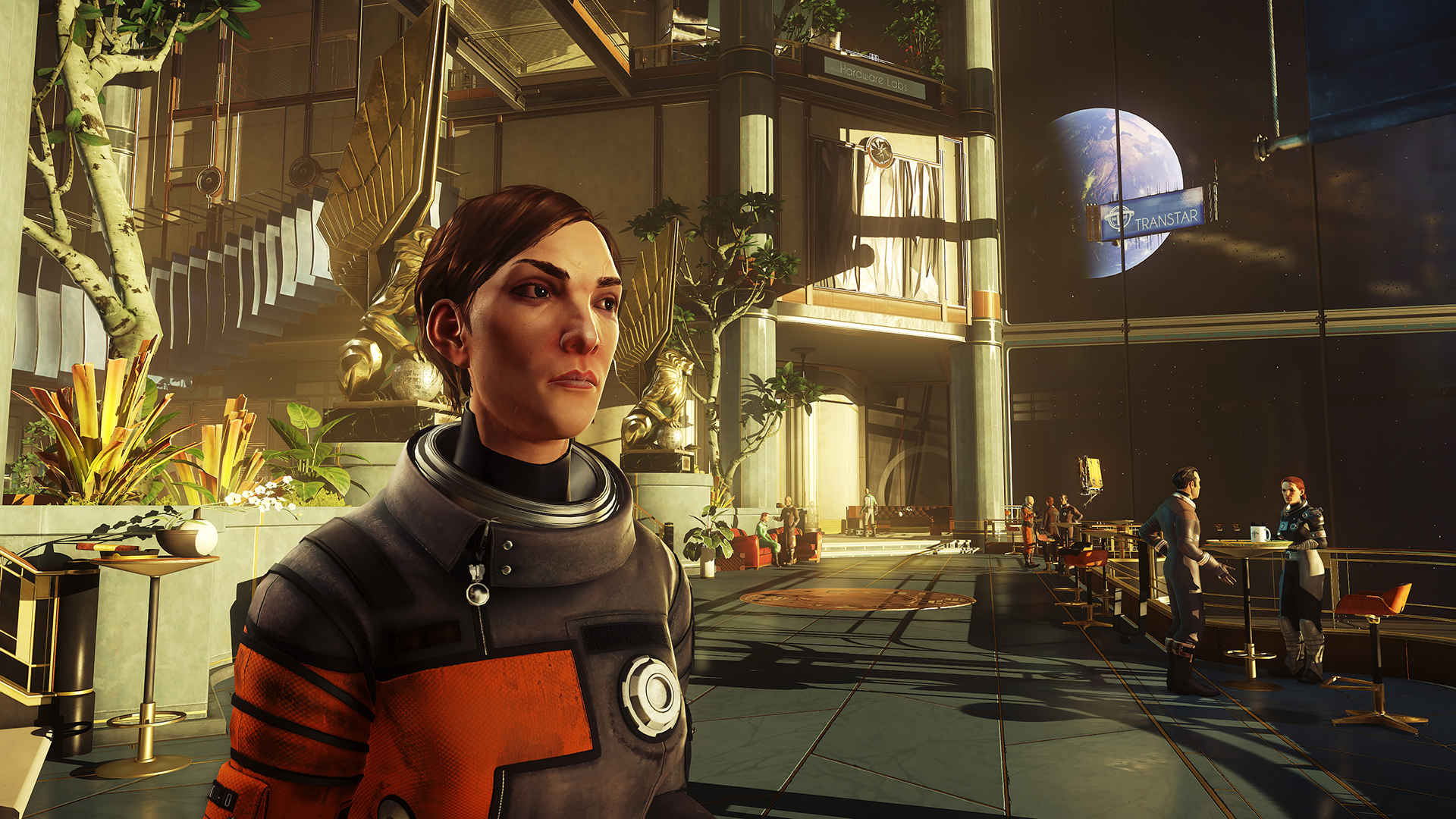
It's a brilliant opening, the one part of Prey to receive the recognition it deserves. But its ingenuity stretches beyond that immediate surprise, serving as your first lesson not to take anything on Talos 1 at face value. This is quickly reinforced on your first encounter with a Mimic, when you realise that virtually any object in the game world could suddenly sprout tendrils and leap at your face. These shapeshifting alien spiders are an impressive piece of enemy design – and not just conceptually. The way their tendrils flow and shift as they move is mesmerising, as is watching them slowly freeze in place when you hose them down with your GLOO Cannon.
Indeed, Prey's general presentation remains spellbinding. There's a distinctive, classy timelessness to its blend of busy near-future science-fiction – all dashboards, dials and diodes – with elegant art-deco furnishings. And indeed to the faces of its cast, less grizzled and menacing than Dishonored's guards and vagabonds but with that mildly caricatured touch that marks them as Arkane NPCs. The writing and acting are unadorned and understated, including a disarmingly weary turn from Benedict Wong as your enigmatic brother Alex. The music, composed by Mick Gordon, is a world away from the industrial metal of Doom's Martian rampage, built from subdued electronic riffs and eerie ambient noises, like radio signals that have travelled light years to be sampled.
Sign up to the GamesRadar+ Newsletter
Weekly digests, tales from the communities you love, and more
But the crowning achievement of Prey's understated style is Talos 1 itself, surely the single finest example of 3D level design from a studio synonymous with the phrase. While there are flashier, higher-concept examples within Arkane's canon, notably the Clockwork Mansion and Stilton Manor of Dishonored 2, nothing in that series can match up to this space station, in which practically the entire game is housed. Every square foot has been accounted for, every sector and shortcut moulded to fit inside a kilometre-long orbital art installation. The accuracy to scale is crucial to making one of the game's most effective tricks work: the ability to venture outside the station, using a spacesuit to travel between airlocks.
Talos 1's layout is also where Arkane pays its clearest tribute to Looking Glass. It has the same geometric fundamentals as System Shock's Citadel Station, both metal columns where operational sectors are delineated vertically. At the peak of each is a verdant grove where the respective infestations are most acute; at the bottom, twin nuclear reactors where you can seal the structure's fate. Exploring each space plays out similarly too. Both games encourage you to divine objectives yourself, listening to audio logs for clues and, in Prey's case, using an employee-tracking system to locate specific individuals.
Shifting shape
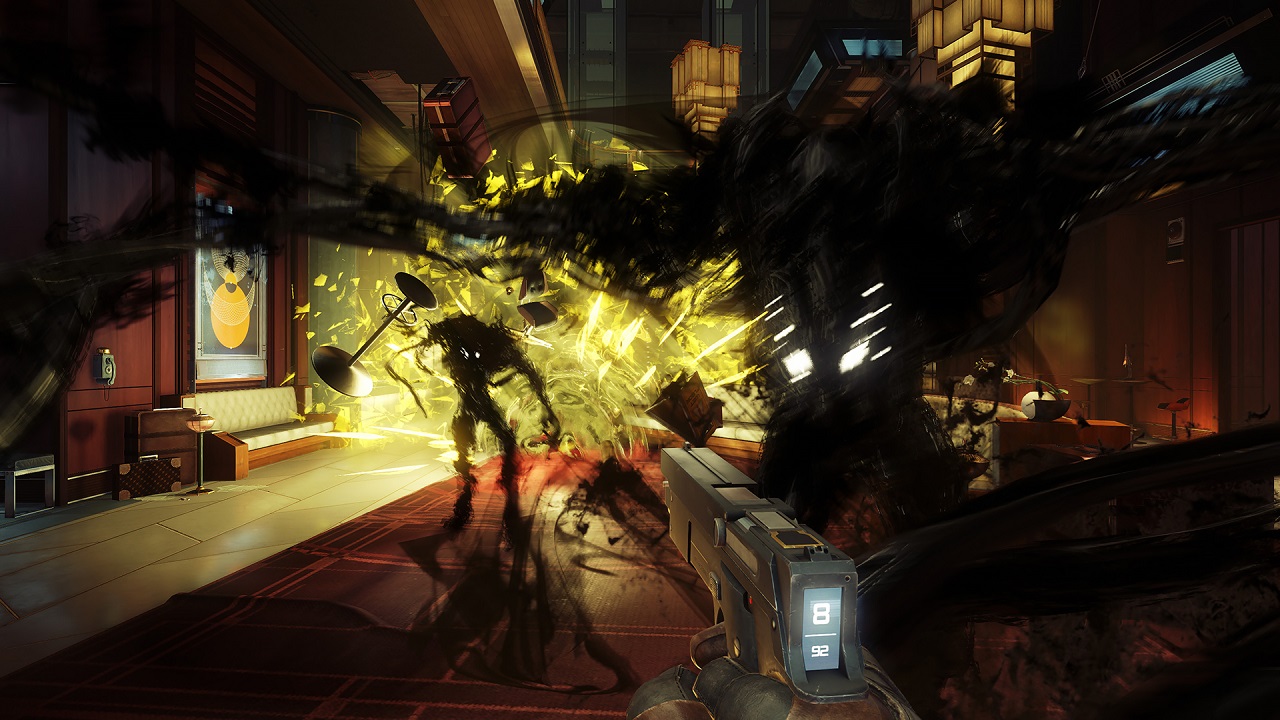
As its spiritual successor, Prey owes much to System Shock. Yet in replaying System Shock, in its original or remade form, it becomes clear just how far Prey has exceeded it. System Shock remains a key text in immersive-sim design, but does not itself truly fit the definition as we understand it today. It has no real stealth systems, and few ways to interact with or manipulate enemies beyond shooting them. It is, ultimately, a shooter with loftier aspirations, a survival horror on the more mindful edge of the genre.
Prey, by comparison, lets you approach situations with remarkable flexibility. GLOO can be used to entrap enemies, but also to climb walls, create bridges or nullify hazards such as fires and electrical shortages. Your adopted mimic power lets you transform into a cup, but also a gun turret or a flame-spitting engineer robot. The best tool on your belt, however, is the most unassuming: the Huntress Boltcaster. This toy crossbow fires plastic-tipped foam bolts that deal no damage to enemies but have a dozen other uses. They can activate door buttons and computer touch-screens from a distance, distract Typhon, or set off traps you've devised using EMP or 'Recycler' grenades, the latter compressing any nearby objects into elemental balls – Typhon included.
It's a subversive toolset that trusts you to figure out its diversity of function. But it is in this trust that Prey opens itself up to failure. The lack of mechanical immediacy makes its tools tough to grapple with when under attack by the game's Typhon, which are not merciful predators. And for all the ingenuity of their design, the unknowability of your alien foe makes them unsatisfying cannon fodder. This isn't such a problem when you treat combat as a puzzle to be solved, using the environment and your powers to conjure experimental solutions. Yet certain foes, like the floating Telepath and Technopath, appear to defy such an approach, tempting you to pull out a pistol or a shotgun, neither showing Prey at its best.
In place of more recognisably human foes, all of the characterisation is poured into the station's crew. Sublime use of audio and text logs lends nuanced personalities to this cast of hundreds, despite the fact that they're nearly all dead by the time you awaken in that penthouse. This does mean Prey lacks attention-grabbing headliners in the mould of the previous games' SHODAN, Andrew Ryan and Sander Cohen. Yet its narrative is the strongest of any Arkane game, a cerebral yarn about memory and identity. What does it mean to be human? What does it mean to be you – and, indeed, Yu? In every facet of its design, Prey takes the subtler route. That's precisely what makes it special, but also a harder sell to a mass audience. Unsurprising, then, that Arkane Austin would wish to make something with greater immediacy for its next game. And on paper, Redfall was exactly that. Vampires! Guns! Multiplayer! Open world! Loot! All the boxes thoroughly ticked. But it was, in retrospect, a vast overcorrection.
The consequences of Redfall's failure for Arkane are still unclear. Requests in recent job postings for experience with "actionRPGs and immersive sims" hint at a return to the studio's roots, as does the presence of a Dishonored 3 in Microsoft's leaked plans (though that may well be saved for the Lyon team that led on the second game). This would no doubt be embraced by the studio's longtime fans, but doesn't simply wave away the problems that led Arkane down this thoroughfare in the first place. No developer wants to make a bad game, but equally, no developer wants to make a good game that nobody plays – a problem that has dogged the immersive sim for almost 30 years.
System Shock may have been beloved by those in the know, but according to Looking Glass founder Paul Neurath it ultimately resulted in a net financial loss for the studio. In this sense, Prey followed its inspiration with nigh-poetic symmetry. The only hope is that great game design eventually wins out and word spreads, just as System Shock's legacy has grown over the decades. And here there is a more optimistic parallel to be found: as the years pass and the red shifts, Prey's star only ever shines brighter.
This feature first appeared in Edge Magazine, which you can pick up right now here.
Rick is the Games Editor on Custom PC. He is also a freelance games journalist whose words have appeared on Eurogamer, PC Gamer, The Guardian, RPS, Kotaku, Trusted Reviews, PC Gamer, GamesRadar, Rock, Paper, Shotgun, and more.


